Pinakbet is one of my favorites when it comes to vegetable dishes. It’s a mixture of stir-fried vegetables simmered in a rich flavor of pork, shrimp paste (bagoong alamang), and spices. If you want to taste the full potential of this dish then you need to use the key ingredient, the shrimp paste.
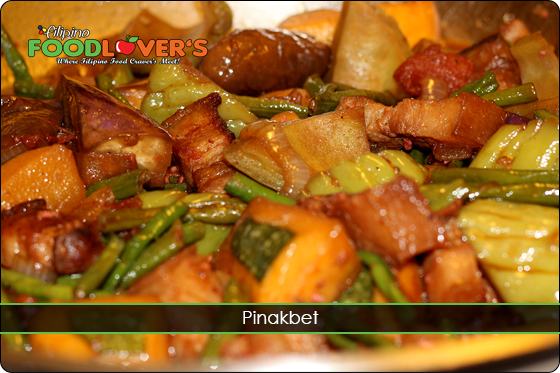
It gives it that final kick that I think it needs. For most western cultures this dish wouldn’t be a favorite, but for most Filipinos it’s a mouth-watering dish. For those who cannot eat shrimp paste, you may substitute it with fish sauce. The traditional version of this dish includes Okra, which I happen to dislike, so with that being said I omit it in this recipe. However, if your one of those who likes Okra, then by all means add it back to the recipe. You need to add Okra along with the rest of the veggies after the calabaza squash. So bring your appetite and let’s get cooking.
Ingredients:
- 1 Lb. Pork belly or pork butt sliced in 1 x ½ inch strips
- 2 Cups of string beans (sitaw or sitao)
- 3 Cups of sliced Squash (calabaza)
- 2 Pcs. Small eggplant cut in halves & sliced diagonally
- 2 Pcs. Ampalaya (bitter melon/bitter gourd) cut in halves & sliced diagonally
- ¼ Cup of bagoong alamang (shrimp paste)
- 1 Tbs. Soy sauce
- 1 Medium onion sliced thinly
- 1 Large tomato diced
- 4 Cloves of garlic peeled and smashed
- 1 Tsp. MSG
- 1 Tbs. Corn oil
Directions:
- In a wok or large pan, add oil and brown pork belly on all sides.
- Push pork belly to one side of the wok, then add garlic, and sauté until golden brown.
- Next, add onions and allow it to cook until the onions hit that shiny stage.
- Add tomatoes, stir well, cover it, and let it cook for one-minute.
- Then, add calabaza squash and let it cook for three-minutes. Now add the rest of the veggies.
- Stir well, cover the wok, and let it simmer for 5 minutes.
- After that, add soy sauce, ground black pepper, and bagoong (shrimp paste), replace the cover, and let it cook for another 5 minutes.
- Remove cover; check the calabaza squash for doneness by poking it with a toothpick.
- Once the calabaza squash is done, you may go ahead and adjust the taste by adding salt & pepper if needed.
- That’s it you’re done. Serve with white steamed rice. Enjoy!
Tips: Additional cooking time may be necessary if calabaza squash is not all the way cooked. Do not adjust the taste until this part is done.
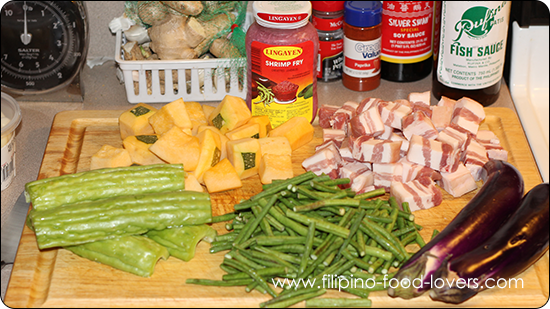
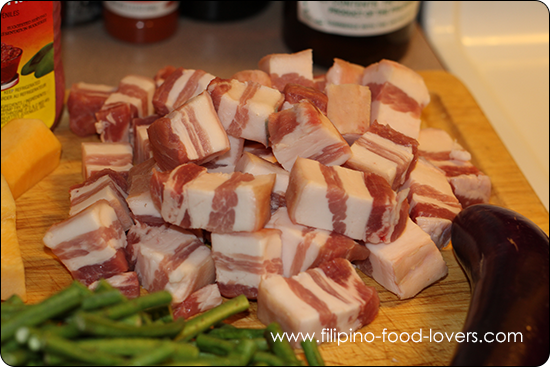
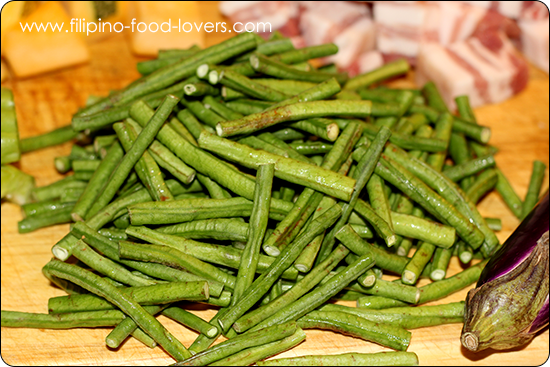
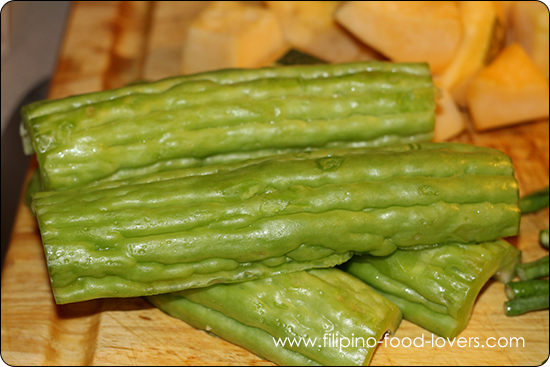
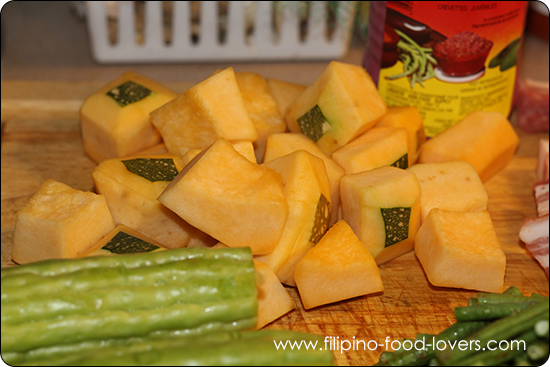
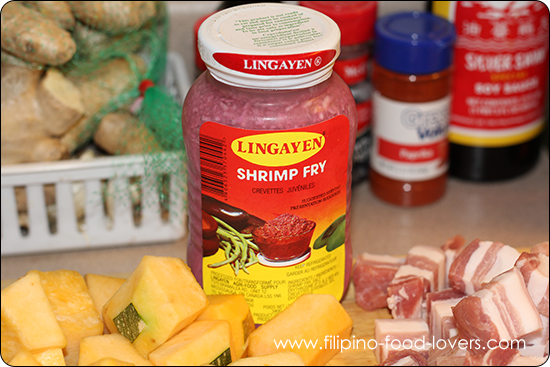
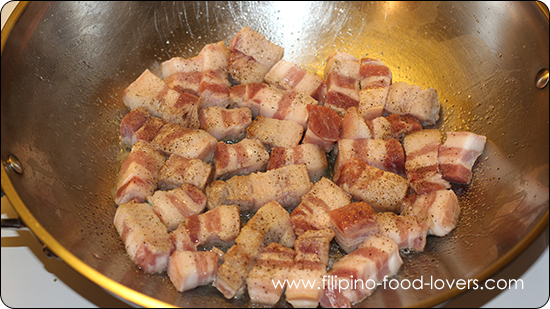
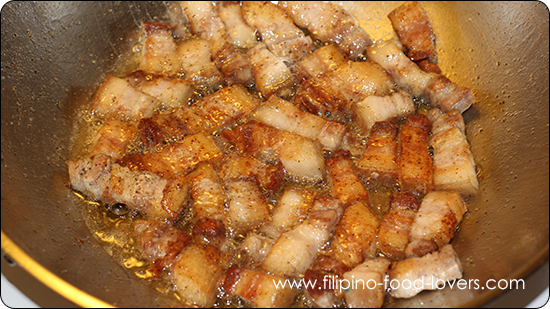
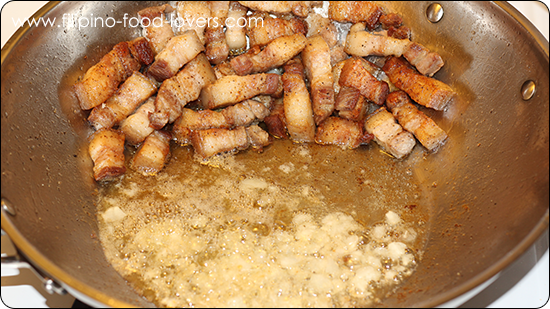
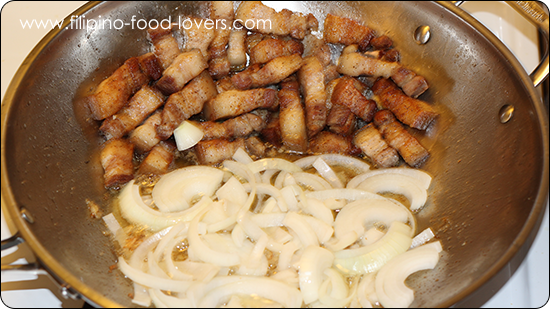
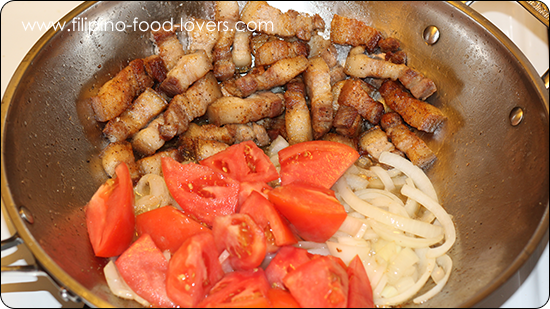
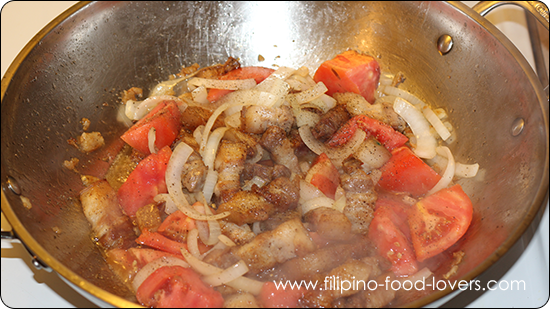
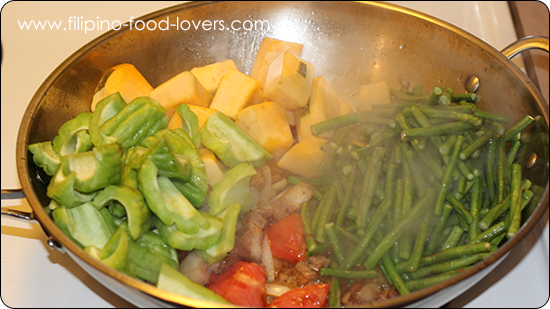
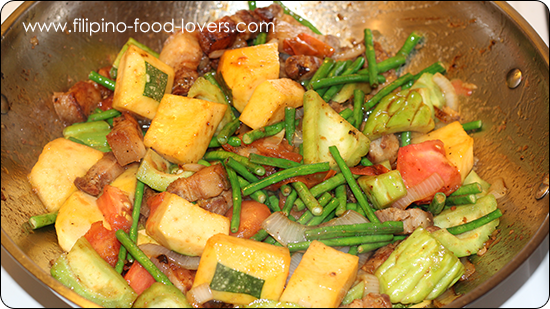
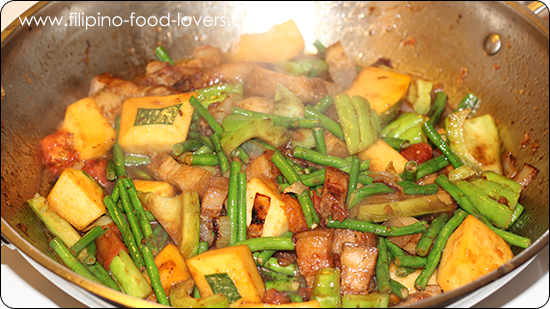
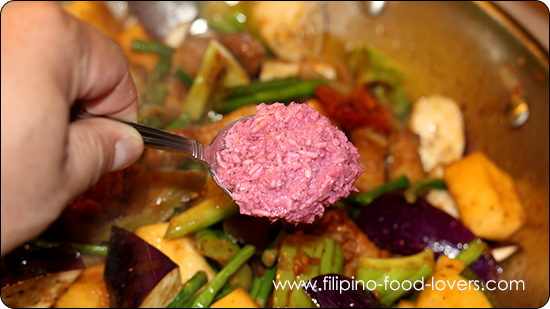
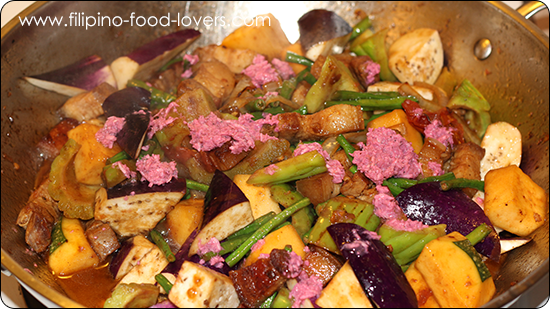
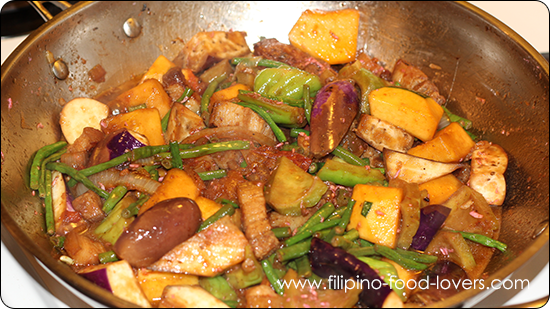
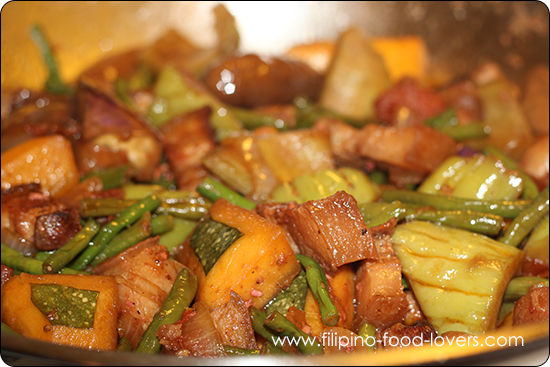
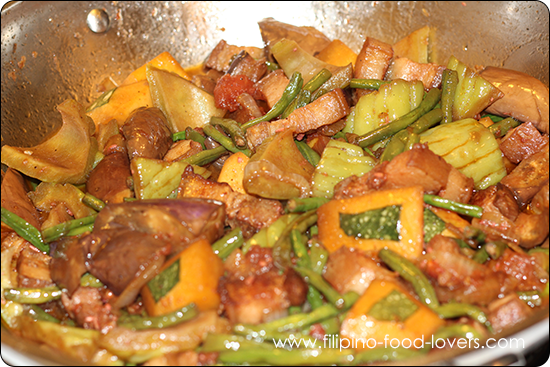
 Posted in
Posted in  Tags:
Tags: 


A colleague and I were talking recipes and she mentioned that her pinakbet would turn into ratatouie (sp). Its not too far from the truth as the basic ingredients and cooking method is the same…stewed summer vegetables. Pinakbet is one of my favorites, but took me a long time to enjoy it. I remember growing up and being enticed by its appearance and smell as its ladeled on top of steaming rice. Then to my suprise and disgust, biting into a piece of bawang. Suddenly the subtle sweetness of the sitaw and creamy sweetness of the calabasa didn’t taste so good. Even during the rare moments when dining at a Filipino sit down or turo turo, I find that the pinakbet tasted old or just too fishy. I’m not a fan of pinakbet tagalog (alamang version). But I do enjoy making pinakbet on my own and usually make it the traditional Ilocano way with bagaoong isda or skip that altogether just use fish sauce, albeit nuoc mong instead of patis. I find that it brings the natural sweetness of the meats and vegetables instead of an upfront fish flavor (which most westerners don’t find palatable). As a shortcut, I’ll prepare pinakbet without meat and just head over to the local Mexican market and get a pound or so of carnitas and just toss that in during the final moments of cooking. An indirect homage to our Latino cousins in a vegetal savory sweet kind of way.
Being married to an Ilocano, I have learned to cook a lot of the best pinoy dishes and Pinakbet is one of my favorite. I have tasted all the different ways that the pinakbet is cooked. And most of them were cooked with the bagoong balayan. It is the most authentic way of cooking the Pinakbet. Without the bagoong balayan, then it’s not a pinakbet.
What soy sauce? It’s not listed in the ingredients
Sorry about that. The soy sauce is now added on the ingredients list. Thank you for pointing it out!
i am ilocano we don’t use bagoong alamang(we use bagoong isda) and never seen any ilocano using soy sauce.don’t say its pinakbet if u r using this ingredients.LOL